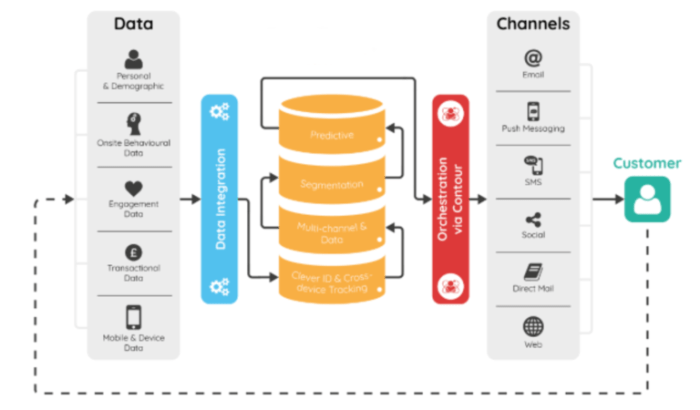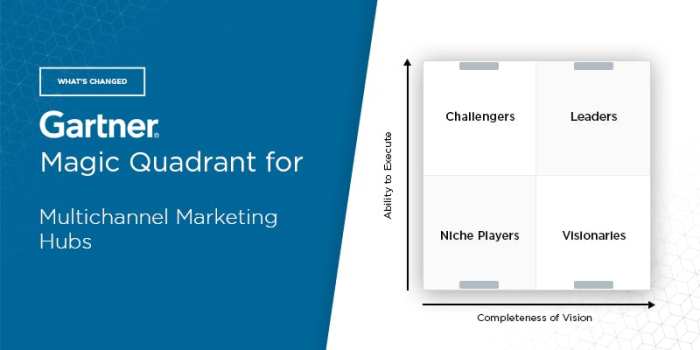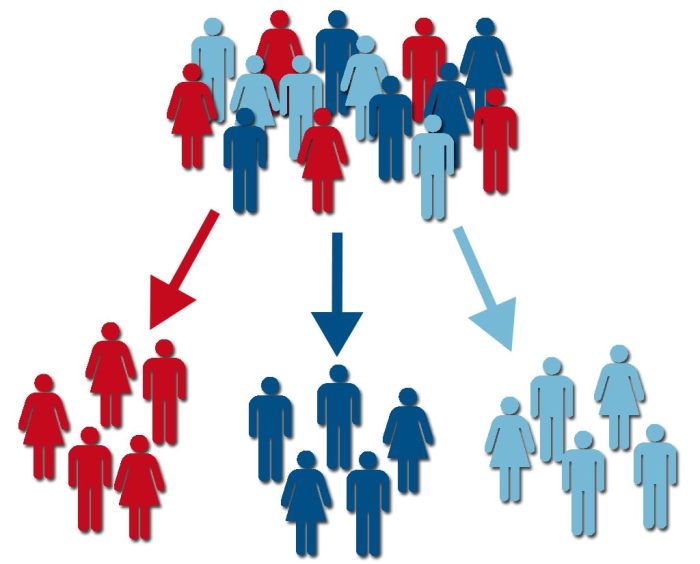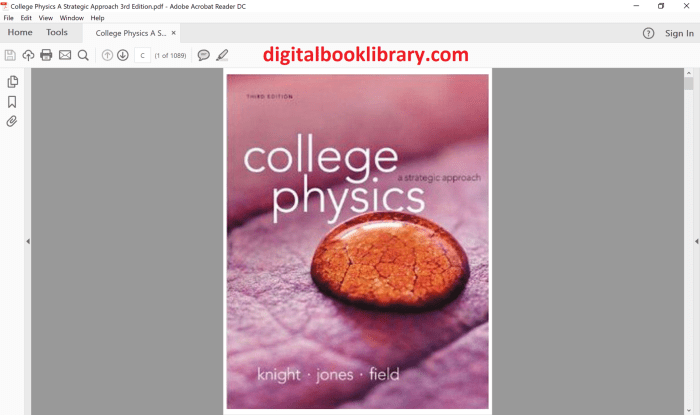Embark on a journey into the realm of database segmentation marketing automation and multichannel communication, a transformative trifecta that empowers businesses to target, engage, and nurture their customers like never before. Database segmentation lays the foundation by dividing your customer base into distinct groups based on shared characteristics.
Marketing automation then steps in, automating repetitive tasks and personalizing customer experiences at scale. Finally, multichannel communication ensures that your messages reach your audience through the channels they prefer, creating a seamless and impactful customer experience.
As we delve deeper into this topic, we will uncover the benefits, best practices, and emerging trends that define this powerful trio. Prepare to gain actionable insights and strategies that will elevate your marketing efforts to new heights.
Database Segmentation: Database Segmentation Marketing Automation And Multichannel Communication

Database segmentation is the process of dividing a marketing database into smaller, more targeted groups based on shared characteristics. This allows marketers to send more relevant and personalized messages to each segment, which can lead to increased engagement and conversions.
There are many benefits to database segmentation, including:
- Improved targeting: By segmenting your database, you can ensure that your marketing messages are reaching the right people.
- Increased personalization: You can tailor your messages to the specific needs and interests of each segment.
- Boosted engagement: When people receive marketing messages that are relevant to them, they are more likely to engage with your brand.
- Improved conversions: By sending more targeted and personalized messages, you can increase your conversion rates.
There are many different ways to segment your database, including:
- Demographics: Age, gender, income, location, etc.
- Behavior: Purchase history, website activity, email engagement, etc.
- Psychographics: Values, beliefs, attitudes, interests, etc.
Marketing Automation
Marketing automation is the use of software to automate marketing tasks, such as email marketing, social media marketing, and lead generation. This can free up marketers to focus on more strategic initiatives, such as developing new products and services or building relationships with customers.
Key features of marketing automation platforms include:
- Email marketing: Create and send automated email campaigns.
- Social media marketing: Schedule and publish social media posts.
- Lead generation: Capture and qualify leads.
- Customer relationship management (CRM): Track and manage customer interactions.
- Analytics: Measure the results of your marketing campaigns.
Marketing automation can be used to improve marketing campaigns in a number of ways, including:
- Increased efficiency: Automate repetitive tasks, such as sending emails and scheduling social media posts.
- Improved targeting: Use segmentation to send more targeted and personalized messages.
- Increased engagement: Create more engaging content and experiences for your customers.
- Improved conversions: Track the results of your campaigns and make adjustments to improve your conversion rates.
Multichannel Communication

Multichannel communication is the use of multiple channels to reach your target audience. This can include channels such as email, social media, print, and paid advertising.
There are many advantages to using multichannel communication, including:
- Increased reach: Reach more people by using multiple channels.
- Improved engagement: Keep your audience engaged by providing them with content on their preferred channels.
- Increased conversions: Drive more conversions by using multiple channels to promote your products and services.
To create effective multichannel communication campaigns, it is important to:
- Define your target audience: Who are you trying to reach?
- Choose the right channels: Which channels are your target audience most likely to use?
- Create consistent messaging: Make sure your messaging is consistent across all channels.
- Track your results: Measure the results of your campaigns and make adjustments to improve your results.
Integration of Database Segmentation, Marketing Automation, and Multichannel Communication

Database segmentation, marketing automation, and multichannel communication can be integrated to create a powerful marketing strategy. By segmenting your database, you can send more targeted and personalized messages to each segment. You can then use marketing automation to automate the delivery of these messages and track the results of your campaigns.
Finally, you can use multichannel communication to reach your target audience on their preferred channels.
There are many benefits to integrating these technologies, including:
- Increased efficiency: Automate repetitive tasks and streamline your marketing workflow.
- Improved targeting: Send more targeted and personalized messages to each segment.
- Increased engagement: Keep your audience engaged by providing them with content on their preferred channels.
- Improved conversions: Drive more conversions by using multiple channels to promote your products and services.
Here are some examples of how these technologies can be integrated:
- Use segmentation to create targeted email campaigns.
- Use marketing automation to automate the delivery of social media posts.
- Use multichannel communication to reach your target audience on their preferred channels.
Case Studies and Best Practices

There are many companies that have successfully used database segmentation, marketing automation, and multichannel communication to improve their marketing results. Here are a few examples:
- Amazon: Amazon uses segmentation to send personalized product recommendations to its customers.
- Nike: Nike uses marketing automation to automate the delivery of personalized email campaigns to its customers.
- Starbucks: Starbucks uses multichannel communication to reach its customers on their preferred channels, including email, social media, and mobile.
Here are some best practices for using these technologies:
- Start small: Don’t try to do too much at once. Start by segmenting your database and sending targeted email campaigns.
- Use a data-driven approach: Use data to make decisions about your segmentation, targeting, and messaging.
- Test and measure: Regularly test your campaigns and make adjustments to improve your results.
Database segmentation, marketing automation, and multichannel communication are powerful tools that can help you improve your marketing results. By integrating these technologies, you can create a more targeted, personalized, and engaging marketing strategy.
FAQ Overview
What is database segmentation in marketing automation?
Database segmentation is the process of dividing your customer base into distinct groups based on shared characteristics, such as demographics, behavior, or preferences.
What are the benefits of using marketing automation?
Marketing automation can help you automate repetitive tasks, personalize customer experiences, and track your marketing performance.
What is multichannel communication?
Multichannel communication is the practice of delivering your marketing messages across multiple channels, such as email, social media, and paid advertising.

